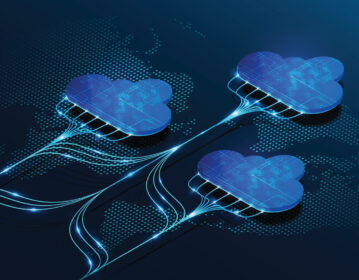
For SAP ECC and S/4HANA customers, SAP is pushing hard on RISE with SAP. SAP leadership told their investors they want to convert their remaining ~€11 billion maintenance stream to RISE with SAP cloud revenue, which will be worth 2x-3x revenue for them.[1]
Cloud and subscription-based contracts may be good for shareholders, but are they good for customers?
The market appears to be voting no.
There are good reasons many SAP customers are holding back from the RISE with SAP program. When your current SAP system is stable, secure, performant, compliant and highly customized, it can be difficult to create a business-driven, ROI-positive justification for what is typically a multi-million-dollar migration project. The costs, risks and disruption just aren’t worth it.
Perhaps that is why as of Q2 2024, nearly two-thirds of ECC customers had yet to purchase or subscribe to S/4HANA.2 A RISE with SAP contract may span financial, commercial, technical and operational risks, and knowing why will help you make the best decisions for your business and IT roadmap.
It’s critical for SAP customers to know they have options: RISE with SAP is not mandatory and there are proven alternative paths for achieving business and technology goals in a more affordable, flexible and timely way.
10 Reasons why the RISE with SAP program might not be your best path forward
-
Your existing SAP product and version can serve as your core ERP for several more years
Just because SAP is ending mainstream support for ECC and several versions of S/4HANA in the next few years doesn’t mean that those systems will no longer serve their intended purpose. They can continue to be your system of record, storing and reporting on well-defined data and transactions while you invest in systems of engagement and differentiation that integrate and interact with your core ERP. With third-party support, you can stay on your current version for up to 15 additional years.
-
You’ll give up your perpetual licenses for ECC or S/4HANA
Ownership has its privileges. SAP wants you to surrender your perpetual licenses for subscription licenses, changing you from an owner to a renter. And that means they can raise the rent in the future without reason. See From TCO to TCC: Don’t Give Up Cost Control to a Vendor “Landlord”.
-
You’ll get locked into a bundled subscription contract
When your right to use software is inextricably connected to your contract for running and supporting the software, your ability to exit any portion of that bundled contract may be limited. It could also limit your future flexibility for shifting investment to technologies other than SAP’s. See Understanding RISE Contracts – Beware of the Vendor Lock-In Bundle.
-
You won’t have a direct contract with a hyperscaler; it will be through SAP
A RISE with SAP contract allows you to select your hyperscaler, but the relationship is owned and managed by SAP as part of a bundled agreement. Making service level or scope changes as your business needs change could be problematic. To keep your options open, we recommend organizations own and manage their hyperscaler relationships directly.
-
You’ll be forced into a costly, risky and disruptive migration
These migrations can typically cost tens or even hundreds of millions of dollars and can take from six months to several years. With limited people, time and money, this new cost and delay could put you behind your competition and impact your growth and profitability goals, or worse yet, you could end up with a failed project.
-
You’ll have to wait until you complete your migration to put SAP AI into production
SAP’s AI capabilities in S/4HANA and other applications are reliant on specific versions of their cloud-based products. To get the AI features, you need to migrate or upgrade to the minimum required version, deferring your AI benefits until that is done. More waiting time, more impact to your innovation timeline.
-
To stay current on S/4HANA releases, you’ll eventually have to remove and rewrite your customizations (“Clean Core”) to adopt the latest releases
You can bring all your customizations with you to the S/4HANA Cloud, private edition with a “brownfield” migration. But with the private edition, SAP can’t automatically install upgrades, so you will be responsible for upgrading to stay supported. On the other hand, a one-size-fits-all approach could mean discarding your competitive advantage and differentiation – something many are reluctant to give up.
-
You’ll have to pay additional consumption charges to run workloads on SAP BTP (Business Technology Platform)
“BTP is the technical foundation of the entire SAP ecosystem.”3 Customizations, automations and AI functions running on BTP will incur consumption charges that can be difficult to predict and control. The less control over your IT budget, the more chance you’ll have to continue going back to the board to ask for more funds.
-
You can keep your options open for future technological advancements
The digital world is advancing faster than many people anticipated. Market-busting capabilities are coming from companies we never heard of two years ago. By avoiding vendor lock-in, you preserve your ability to remain flexible and explore and adopt new technologies when the fit and timing are right for you. See CFO to CIO: “Give Me Options”.
-
You can innovate faster and extend the life of and value of your existing systems with Rimini Street and ServiceNow, Inc.
Why wait to innovate? Instead of taking on a costly and lengthy migration or re-platforming project before adding new capabilities, you can innovate on and around your existing systems with capabilities that span your software portfolio. With the deep ERP expertise of Rimini Street and the Now Platform® from ServiceNow, enterprise AI, improved UX and processes, and flexibility for additional modernization can be achieved within months rather than in years, at a much lower cost than RISE with SAP.
Organizations using SAP software can achieve Transformation without Disruption™
ServiceNow and Rimini Street have formed a strategic partnership to enable AI, automation and modernization across existing enterprise software estates.
The partnership between Rimini Street and ServiceNow allows our clients to:
- Orchestrate disparate systems into new digital workflows
- Receive unmatched support and managed services for the full landscape of ERP and software that flow across and into the new UX layer
- Extend the life of existing systems and redirect vendor support costs to invest in innovation and scaling productivity
Key Takeaways
Enterprise technology is changing fast. More than ever, taking control of your roadmap and your costs will give you the flexibility and stability to innovate boldly and strategically. Locking yourself into single-vendor bundled contracts like RISE with SAP could jeopardize your ability to achieve your business short- and long-term goals.
Maximize the life and value of your existing systems and, with the latest Rimini Street and ServiceNow partnership, you can leverage the Now Platform® to innovate on and around your software landscape, delivering enterprise-scale AI, automation and modern user experiences. Learn more about what the Rimini Street and ServiceNow partnership can do for you.
[1] SAP Presentation Q2 2024 – https://www.sap.com/investors/en.html?pdf-asset=fa94e0d2-ca7e-0010-bca6-c68f7e60039b&page=8







